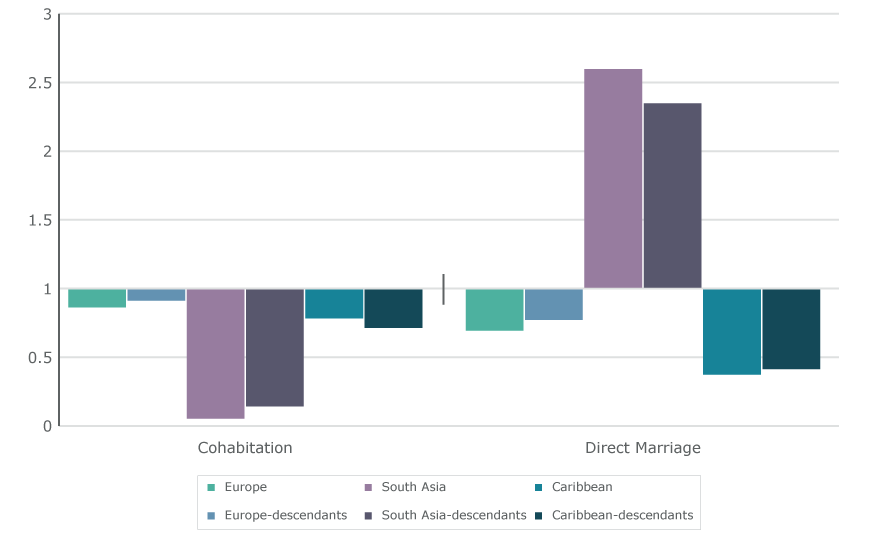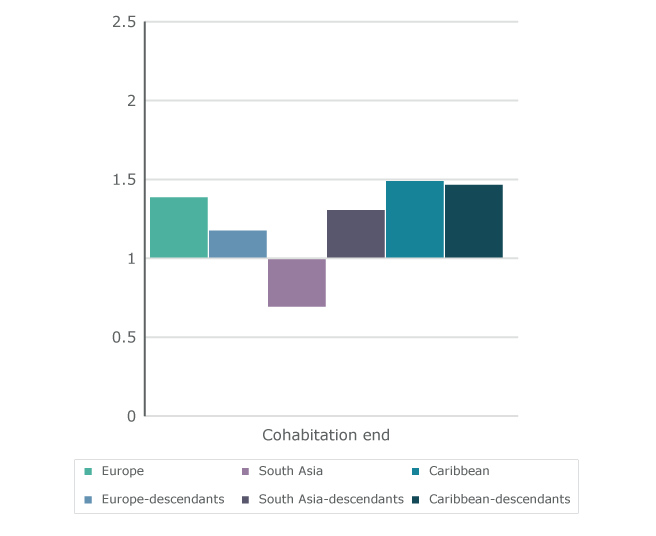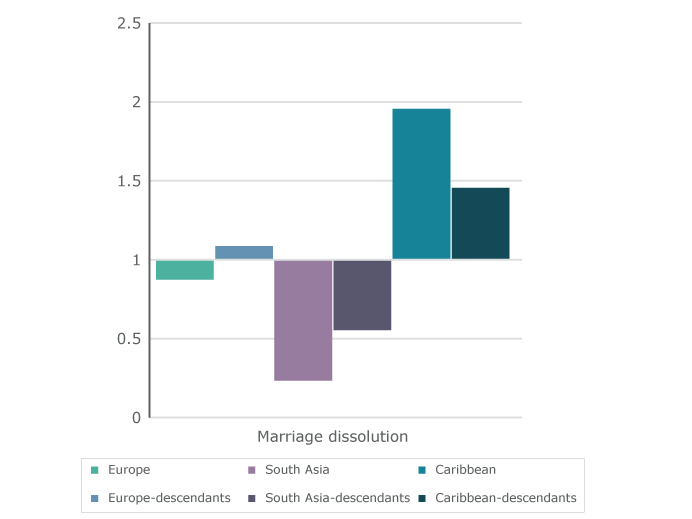Considering that the immigrant population has remarkably increased in the United Kingdom over time, it is interesting to study how immigrants start and end their unions in the UK: Do they follow the same patterns as the ones found in the country where they are currently living?
To answer this question Tina Hannemann and Hill Kulu analyse union formation and dissolution dynamics of various immigrant groups and their descendants, and compare their patterns to those of the natives. Authors’ analyses are not limited to the first time that migrants or natives cohabitate or get married, but they also include second unions to get a comprehensive picture about opportunities and constraints faced by immigrants and their descendants when starting a family.
The findings of this study suggest that partnership patterns in the UK diverge significantly between natives and immigrants, and also across immigrant groups. This is because the social and cultural environment in which people grew up plays a fundamental role when deciding how to start or end a union.
Origin determines partnership outcomes
Cohabitation has been on the rise in the UK during the last decades. Many British women and men decide to start cohabiting and many of them marry eventually, but later in life. Getting divorced is also more frequent than in the past and people tend to start a new union after dissolution more often.
Hannemann and Kulu found relevant differences within immigrant groups. Women born in Caribbean and European countries largely choose to cohabit first, while most South Asian women marry directly (see Figure 1). A similar pattern by origin defines both marriage and cohabitation dissolutions. As a matter of fact, the highest share of breakups includes Caribbean and European women and the lowest involves those from South Asia (see Figure 2). To summarize, British and European women exhibit similar behaviours, while the greatest divergences are in regards to South Asian and Caribbean women.
Regarding the so-called second generation, results show that the ways in which the descendants of immigrants start or end a union largely resemble those of their parents rather than those of the native British population (see Figures 1&2). Therefore, the influence of native peers seems to play a minor role when they decide how to start a union.
Finally, women’s age influences the decision to start a family via cohabitation or marriage, that is, younger women choose cohabitation rather than marriage more frequently than older women, a pattern which has spread over the last decades. Age influences union breakups as well; divorces are currently commonplace among the youngest British couples.

Figure 1. Relative risks of first union formation: Competing risks model for women (cohabitation and marriage).

Figure 2. Relative risks of first union dissolution: Competing risks model for women (cohabitation end).

Figure 3. Relative risks of first union dissolution: Competing risks model for women (marriage dissolution).

*This PopDigest has received funding from the European Union's Seventh Framework Programme (FP7/2007-2013) under grant agreement n° 320116 for the research project FamiliesAndSocieties.
FamiliesAndSocieties (www.familiesandsocieties.eu) has the aim to investigate the diversity of family forms, relationships and life courses in Europe, to assess the compatibility of existing policies with these changes, and to contribute to evidence-based policy-making. The consortium brings together 25 leading universities and research institutes in 15 European countries and three transnational civil society organizations.